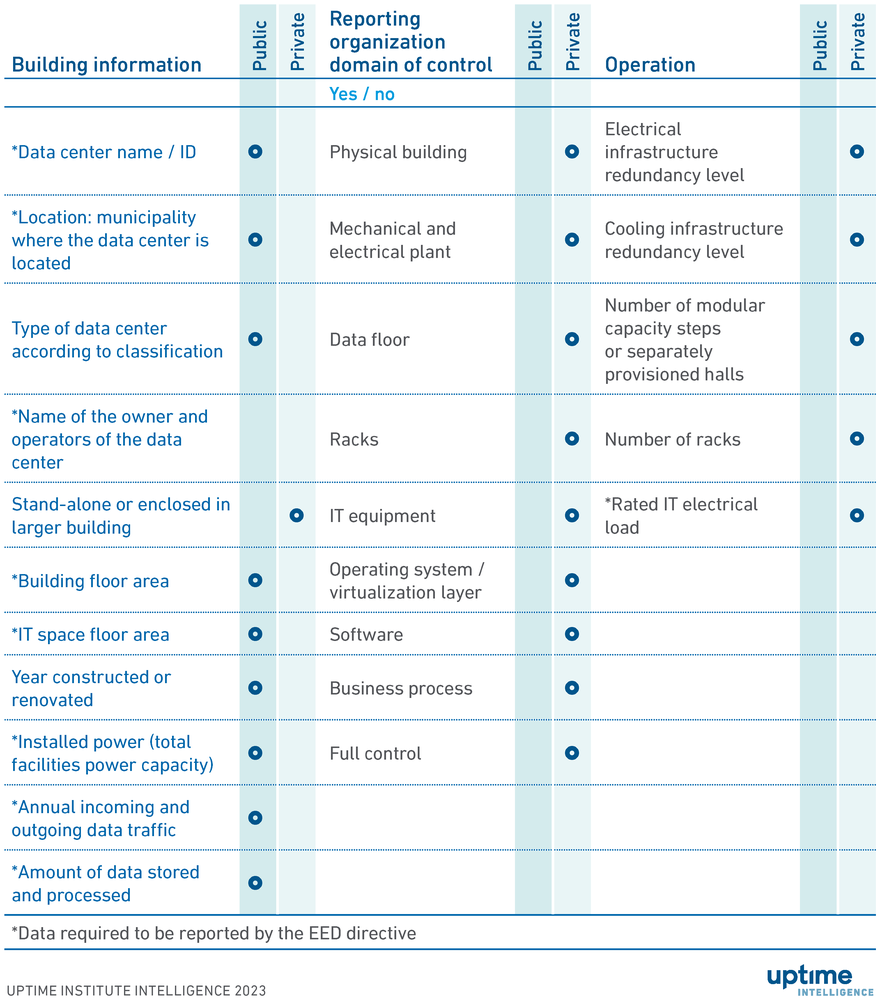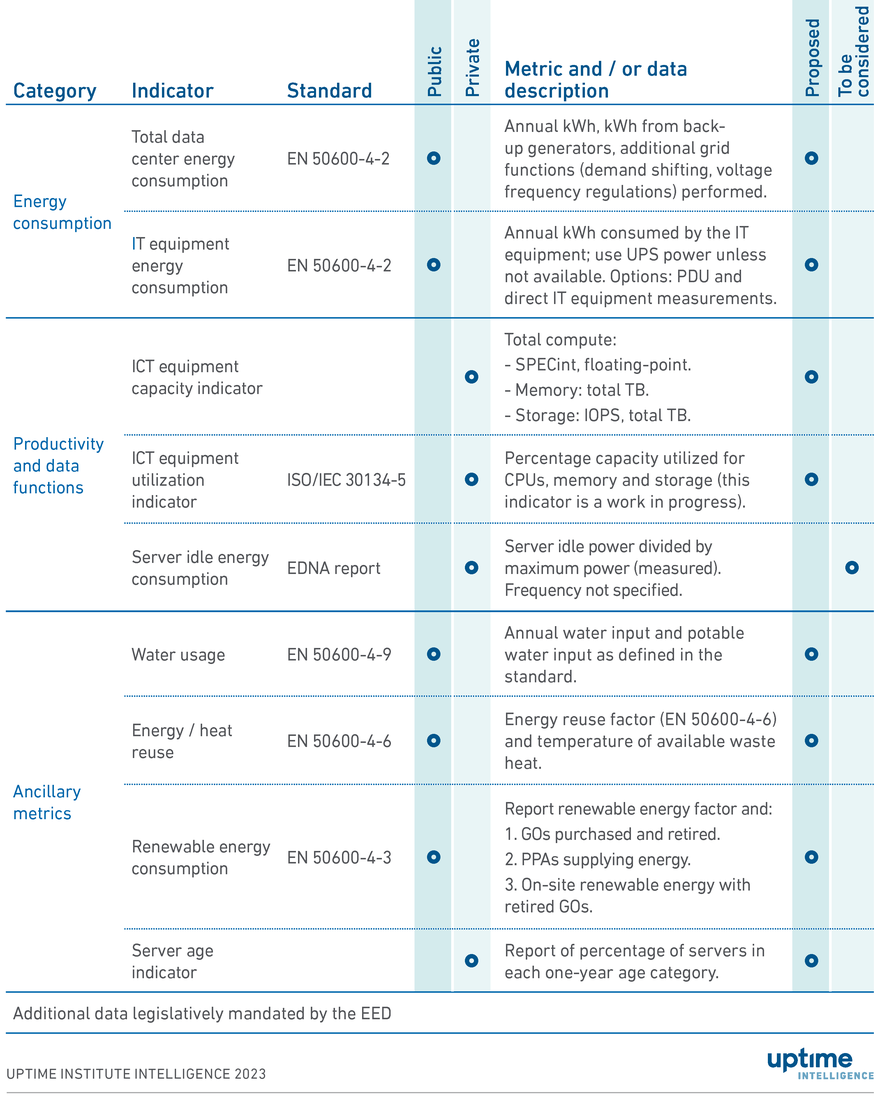For the past two years, Uptime has been tracking the progress of what is likely to be the most important legislation yet for data center sustainability and efficiency reporting. The European Energy Efficiency Directive (EED) will affect all but the smallest European data centers, but its impact will reverberate widely.
An important milestone has now been reached. On February 27, 2022, the European Commission (EC) published its final draft of the Task A report Reporting requirements on the energy performance and sustainability of data centers for the Energy Efficiency Directive. This document is not available online
The publication of this final draft, just two months after the EC closed comments on the first draft of the Task A document, indicates that the EC and the European Parliament are committed to requiring the first data submittal under the EED for the 2023 calendar year on March 15, 2024.
You need to act quickly
Uptime Institute was among many organizations to submit feedback and comments (here are comments from the Sustainable Digital Infrastructure Alliance). The EC reviewed all comments carefully, and this resulted in significant changes to the initial draft. Not all requirements in this final draft will be enthusiastically received by the industry. If they are to comply, data center operators, particularly colocation providers and their IT tenants, will need to quickly establish processes and protocols to collect the wide-ranging dataset. They will also be required to prepare and submit their initial report in just 12 months (by March 2024).
In the final draft, the EC proposes expanding the reported data well beyond the scope established in the EED recast, though much of the data will now be held “in private”.
Portions of the EC’s proposal for server and storage capacity indicators are a cause for concern. SPECint and floating-point measurements for servers and input operations per second (IOPS) capacity and real-time data for storage products are not widely available. A major industry effort would be required to generate and compile the required data. As the EC appears to be ready to designate their capacity measurements of choice in the Task A document, it is important for the industry to comment, and offer alternatives.
While most of the required data is readily available to data centers and IT operators, there will be concerns about providing confidential business information and challenges for colocation operators and their tenants to gather and aggregate data. There is also some indicator data that will be very difficult to generate and compile. Many owners and operators should note that reporting the proposed mandatory operating and indicator data will reveal many details and differences across data center facilities, raising more questions than answers from legislators, regulators, and the public.
Data center definition and classification
The EC has proposed to define a data center using the Eurostat definition, in accordance with the regulation (EU) 2022/132: ”A data center is defined as a structure or a group of structures used to house, connect and operate computer systems/servers and associated equipment for data storage, processing and/or distribution, as well as related activities.“ Definitions of a ”structure” and ”associated equipment” are also proposed to better align with the Eurostat definition to EN 50600, and will likely be published as guidance to the EED requirements.
Data centers will be classified into four categories as detailed in EN 50600: enterprise, colocation, cohosting, and network operator.
For the EU's purposes, hyperscaler cloud providers such as Google Cloud, AWS, and Microsoft Azure are classified as "cohosting" facilities as they fit within the following definition: "a data center in which multiple customers are provided with access to network(s), servers and storage equipment on which they operate their own services/applications. Both the information technology equipment and the support infrastructure of the building are provided as a service by the data center operator".
Data and indicator reporting will be consistent for all four data center categories. The data from each category will likely be assessed against the proposed indicators to analyze and apply best practices and efficiency thresholds across data center types.
Some additional definitions have been included to clarify requirements under the EED. The most consequential is the definition of information and communications technology (ICT) installed power demand as the aggregation of the rated input power in kilowatts (kW) of the installed IT equipment. This is unlikely to be well received: the rated power for a given IT equipment product is a worse-case power demand used to size electrical breakers. It can overestimate the actual power demand and, by extension, the calculated energy consumption by a factor of two or more. The IT installed capacity is visible only to the regulators, but it risks a significant overestimation of potential data center energy consumption. It may also distort ratios, utilization and efficiency metrics that are calculated using this data.
Data center reporting elements and responsibility
Table 1 details the data reporting requirements mandated explicitly in the EED recast (represented by an asterisk) and proposed in the Task A report. The data covers three broad categories:
- Building data.
This category covers basic information about the building, its location, overall IT space area and basic operating indicators, such as energy consumption and quantities of data stored and transmitted. - The reporting organization domain of control.
The EC wants to understand what aspects of data center operations are controlled by the colocation or cloud service provider, and what operations are controlled by the IT operator. Only the enterprise operator will have total control. For some cohosting service types, such as bare metal and infrastructure as a service, the cloud operator will cede control of the operator/hypervisor and software elements to the IT operator. - Operation.
The EC appears to be collecting this data to understand the impact of resiliency and IT equipment density on energy efficiency.
This data should be readily available to data center operators in all categories and relatively easy to collect in aggregate, even for colocation operators.
The data reporting requirements rest with the owner and operator of the data center. The owner/operator is the controlling entity for the enterprise, cohosting, and network operator.
For colocation operators, the operational responsibility is shared between the colocation operator (that manages the physical facility systems) and the IT operator (that controls the IT equipment and systems). The Task A document places the responsibility for the reporting requirements on the colocation operator. While this directly conflicts with the colocation operators’ view that they are not responsible for their IT tenants’ operations, it is the practical solution to aggregating the required data for each reporting location.
Indicators and methodologies
The industry should pay particular attention to Section 9 of the Task A document (Indicators and methodologies for energy performance and sustainability of data centers). This section details the roadmap for, and the boundaries of, the development of data center energy performance and sustainability indicators. The EC recognizes, however, that developing representative, meaningful indicators requires further study, more data collection and additional stakeholder input.
The concern is that the EC has, through its proposals for data collection (Table 2), clearly mapped out its planned choice of capacity and performance metrics. Uptime considers their choices for server and storage products not to be in the best interests of the data center industry. IT operators should advise the EC that other capacity metrics should be considered and evaluated.
In Uptime’s view, there are three areas of concern regarding the EC’s choice of “Productivity and data functions”.
- Capacity data from SPECint or a floating-point "worklet" (a SPECint task) are not readily available and will require a major industry initiative to create a usable dataset. The server efficiency rating tool (SERT) CPU worklet 100% workload measurements can provide a representative, comparative capacity value based on CPU type. SERT measurement data must be generated for all servers sold into the EU and ITI’s The Green Grid has collected SERT measurement data for over 1,000 configurations. The existing SERT dataset, and the need to generate measurements for new products, offers the best approach to create representative server capacity data for use in efficiency metrics.
- IOPS total capacity and real time utilization data are costly and difficult to measure. An easier and more effective metric is to track the populated storage capacity versus total storage capacity.
- Server idle energy consumption, reported either as the idle power value or the ratio of idle power to maximum power, is a poor metric. A low idle power value or ratio is achieved through enabling power management functions. Power management functions cause degradation in server response time. This degradation is acceptable for some workloads, but unacceptable for others. A better regulatory focus is to increase the utilization of IT equipment and work delivered per unit of energy consumed, which will reduce the time that a server is at low utilization or in idle mode.
The final set of indicators, the ancillary metrics, delve into operating details. The water use, renewable energy, and heat reuse metrics are a function of data center design and operator efforts to optimize the values of the metrics. The publication of these metrics will bring increased public, client, and regulatory scrutiny of data center facilities.
Conclusions
The EED reporting and indicator requirements will put the data center industry squarely in the public spotlight; very few, if any, enterprises are currently required to publicly proclaim this level of operating data.
Data centers and IT operators have made major improvements in efficiency over the last decade. They have leveraged the increased work delivered per unit of energy consumed available from each new IT equipment technology generation, and improvements in facilities operations have enabled more work to be performed using less energy.
Recognizing this progress, it is vital that any public or private data reported or published, and any goals or regulations that are set, be selected to provide accurate, relevant, and actionable data. Improvements in the EED are needed and it is important that operators and industry professionals provide final guidance and direction while the opportunity still exists.




